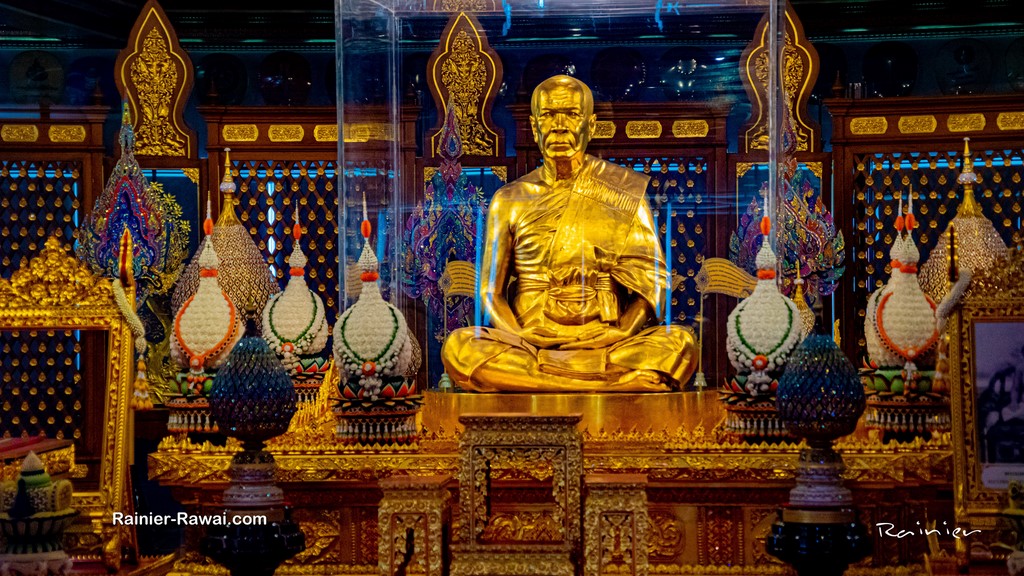Wat Paknam, Bangkok

Wat Paknam is located southeast of central Bangkok, on the other side of the Chao Phraya River.
Wat Paknam Temple is located on Toed Thai Road, Phasi Charoen, Thonburi, and is accessible by road or boat from Tha Chang or Tha Saphan Phut Pier.
 A splendid dome to be discovered!
A splendid dome to be discovered!

Somdet Chuang completed the construction of the temple's huge stupa in 2012.
Nicknamed "Maharatchamongkhon" it means "a blessed and great land". It refers to Thailand under the reign of the royal family, to which the stupa was dedicated. He also refers to Somdet Chuang's honorary name.
The 80-metre-high stupa has a twelve-sided polygonal shape with five floors, including another glass stupa, a room filled with relics, images of Buddha and images of respected monks, including Luang Pu Sodh.
The structure also includes a meditation room, a museum, a parking lot and an elevator. The design is based partly on the shape of Luang Pu Sodh's well-known amulets, and partly on Wat Lok Moli's stupa in Chiangmai, showing both Rattanakosin and Lanna style influences.
At the top of the Maharatchamongkhon stupa, pali sentences were engraved in gold, praising mindfulness, moderation and respect for the five precepts.
The rooms inside are decorated with paintings representing Buddhist cosmology, based on the legend of Phra Malai and the ancient text Traibhumikatha.
The lives of Luang Pu Sodh and Somdet Chuang are also depicted.
The stupa was completed in 2012, at a total cost of 500 million baht.
The top floor of the magnificent stupa has an incredible domed ceiling with neon-coloured images. From there, you can go out on the balcony for a panoramic view of the city

 Le Musee du Wat Paknam
Le Musee du Wat Paknam

The Museum - Wat Paknam asked people to donate used objects of educational value to the museum in the stupa. The result is an eclectic and interesting range, from classic cars to Thai art objects.















Luang Pu Sodh Candasaro (October 10, 1884 - February 3, 1959), also known as Phramongkolthepmuni (Thai: พระมงคลเทพมุนี), was Wat Paknam Bhasicharoen's abbot from 1916 until his death in 1959.
As a former abbot of Wat Paknam Bhasicharoen, he is often called Luang Pu Wat Paknam, which means "the Venerable Father of Wat Paknam". He became a well-known meditation master during the interwar period and the Second World War, and played an important role in the development of Thai Buddhism during this period. He is considered by the Dhammakaya movement to have rediscovered Vijja Dhammakaya, a method of meditation that is believed to have been used by the Buddha himself.
Since the 2000s, some researchers have pointed out that Luang Pu Sodh has also played an important role in the introduction of Theravada Buddhism in the West, a point previously neglected

 The big Buddha, very recent
The big Buddha, very recent

The work had started in March 2017. At 69 metres high, this huge bronze statue was built in honour of the royal family.
The main tours guide most people to the iconic temples of Bangkok and Ayutthaya, but Wat Paknam is definitely worth a visit. Wat Paknam is in an area where most travellers never go and is one of the best places to experience local Thai life.
The view above is the one that came to my eyes when I got off the BTS aerial metro at Krung Thon Buri station...














